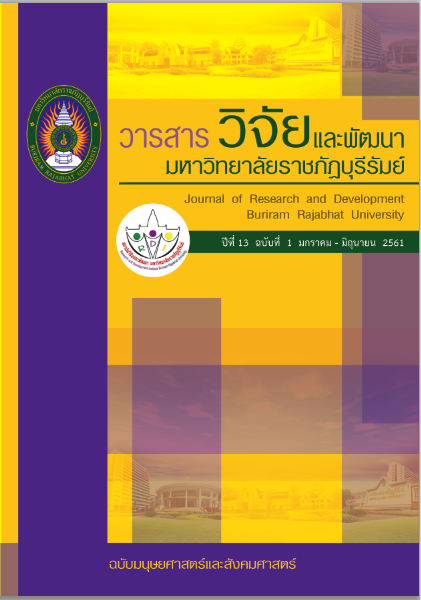The Existing Rice Seed Production and Guideline for Developing of the Community Rice Centers Area Muang District, Maha sarakham Province
Main Article Content
Abstract
The objective of this study was to investigate the existing rice seed production condition. and guideline for development of The community rice centers area (CRSC) Muang District, Maha sarakham Province. The data was collected by interviewing, group discussion, and the participatory action research conference about rice seed manufacturing, rice seed usage and planning about rice seed manufacturing. Participants in this study, who were selected from purposive sampling are 104 members of The Community Rice Centers Area, Muang District, Maha sarakham Province. The study was conducted in in-season of 2017 to 2018. The data was collected on July to September 2017. The result of the study indicated that most of members produce sticky rice farming in order to consume in their family. Furthermore, it was also shown that 78 percentage of members did rice farming mainly for selling to The Community Rice Centers Area. They produced rice seeds once a year. Most of those rice grains were planted by sowing method. The average cost of 400 to 550 kilograms/rai of rice grains was 3,500 to 5,000 baht/rai/season. The strategies to develop rice manufacturing for members of The Community Rice Centers Area was as : 1) develop small water sources in the field in order to be backup water supply for rice farming 2) encourage members to reduce their cost of production by using System of Rice Intensification and producing organic rice seeds 3) develop farmer organization and create standard local and national rice market 4) plan to produce for quality management and gather rice seeds from members.
Article Details
เนื่อหาและข้อมูลในบทความ เป็นความรับผิดชอบของผุ้แต่ง
บทความในวารสารเป็นลิขสิทธิ์ของวารสารวิจัยและพัฒนา มหาวิทยาลัยราชภัฏบุรีรัมย์
References
2. จงรักษ์ มูลเฟย ธวัชชัย รัตน์ชเลศ พฤกษ์ ยิบมันตะสิริ และ รุ่งทิพย์ อุทุมพันธ์. (2550). ศักยภาพของศูนย์ข้าวชุมชนในการพัฒนาสู่การพึ่งตนเองด้านเมล็ดพันธุ์: กรณีศึกษาจังหวัดพะเยา. วารสารเกษตร, 23(2), 155–164.
3. บุญชม ศรีสะอาด. (2545). การวิจัยเบื้องต้น. พิมพ์ครั้งที่ 7. กรุงเทพฯ : สุวีริยาสาสน์.
4. ภาสกร นันทพานิช. (2558). การผลิตข้าว และแนวทางการพัฒนาในเขตน้ำฝนและชลประทาน
จังหวัดอุตรดิตถ์. แก่นเกษตร, 43(4), 643-654.
5. สำนักส่งเสริมการผลิตข้าว. (2558). ฐานข้อมูลศูนย์ข้าวชุมชน. สืบค้นจาก http://brpe.ricethailand.go.th/index.php?option=com_content&view=category&id=16&Itemid=162. (ค้นเมื่อวันที่ 9 มกราคม 2561).
6. Mishra, A., P. Kuma, and A. Noble. (2012). Assessing the potential of SRI management principles and the FFS approach in Northeast Thailand for sustainable rice intensification in the context of climate change. International Journal of Agricultural Sustainability.10, 1-19.
7. Satyanarayana, A., T.M. Thiyagarajan, and N. Uphoff. (2007). Opportunities for water saving with higheryield from the system of rice intensification. Irrig Sci, 25, 99-115.
8. Sinha, S.K., and J. Talati. (2007). Productivity impacts of rice intensification (SRI): A case study in West Bengal, India. Agricultural Water Management, 87, 55-60.
9. Uphoff, N. (2007). An opportunity to enhance both food and water security with the system of rice intensification (SRI).P.117-130. In: U. Aswathanarayana. Food and Water Security. Taylor and Francis, London.

